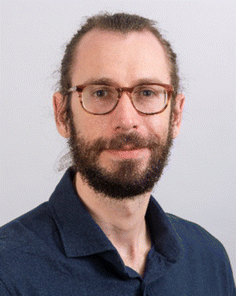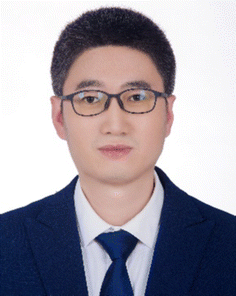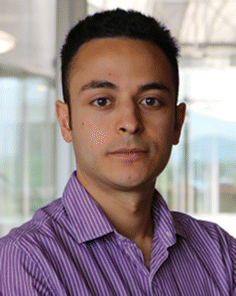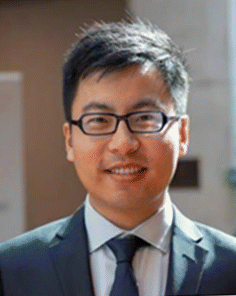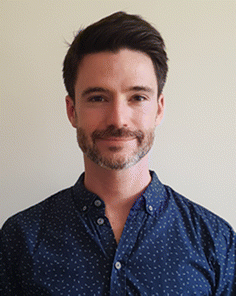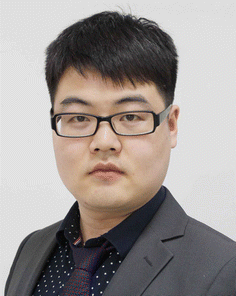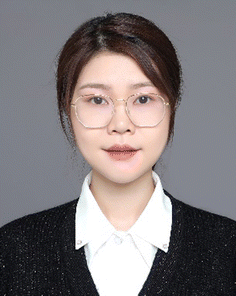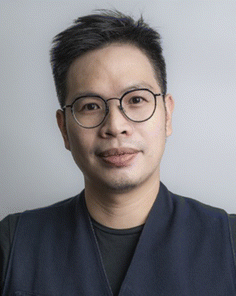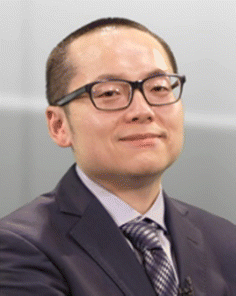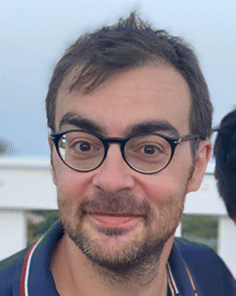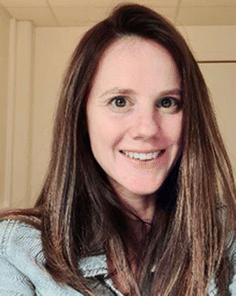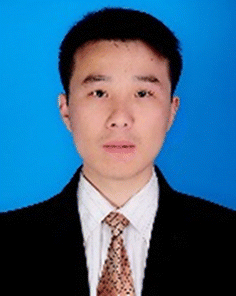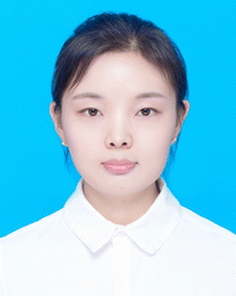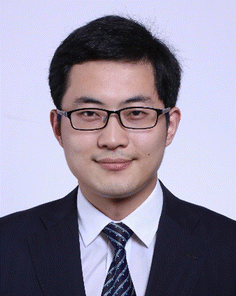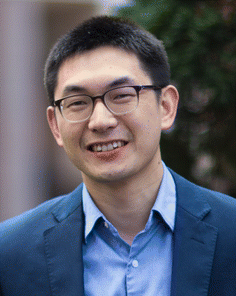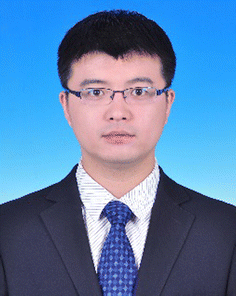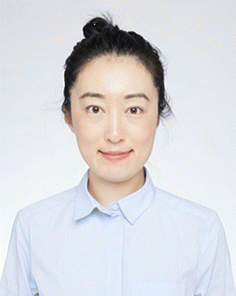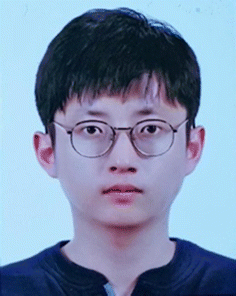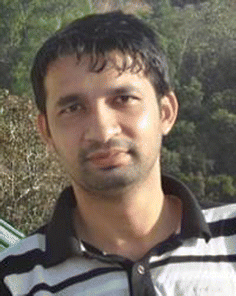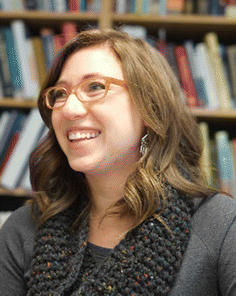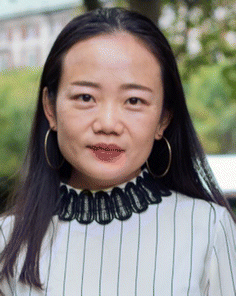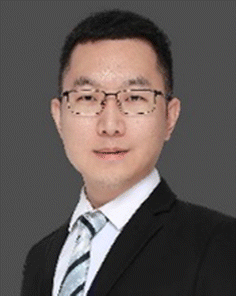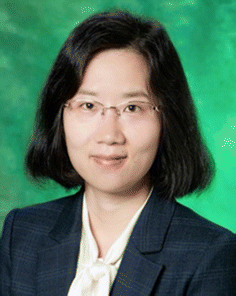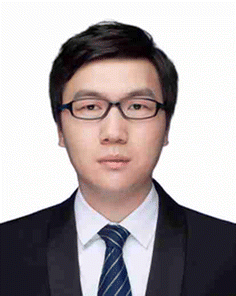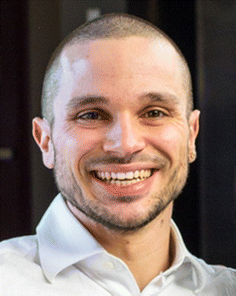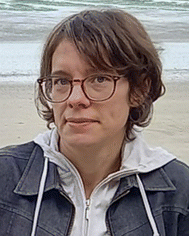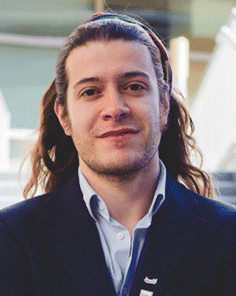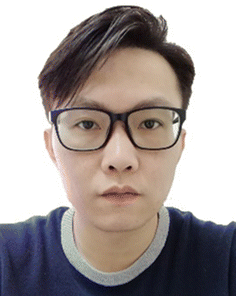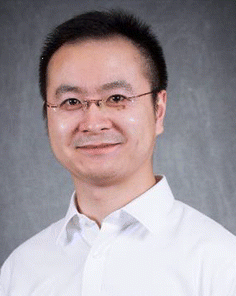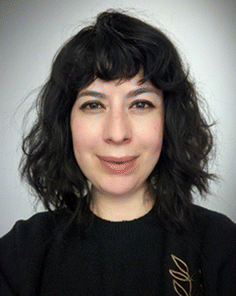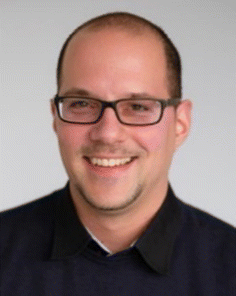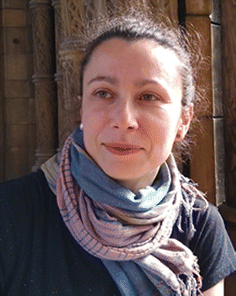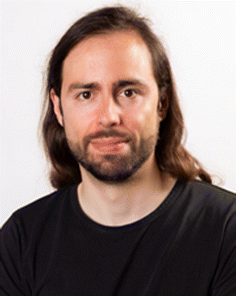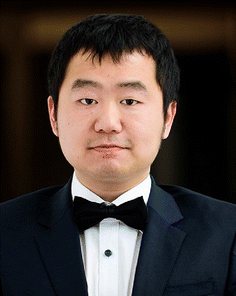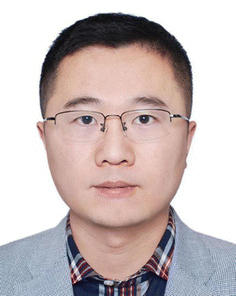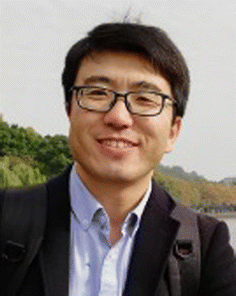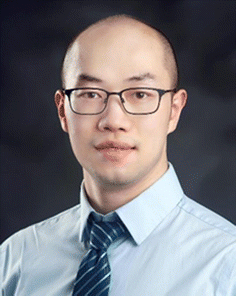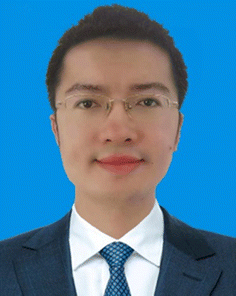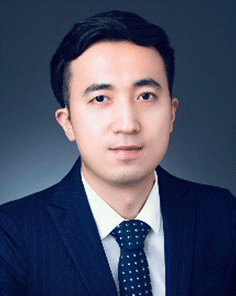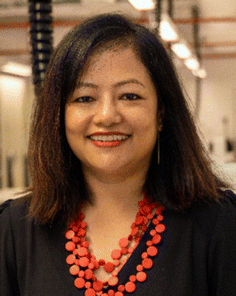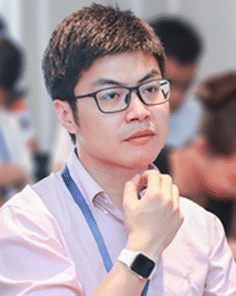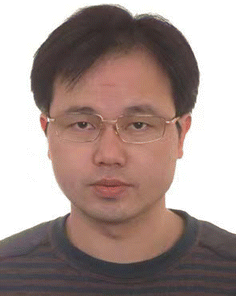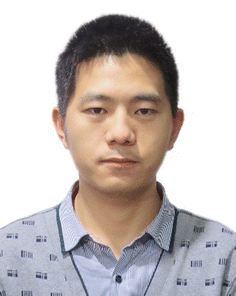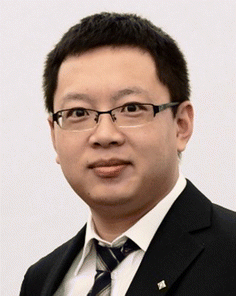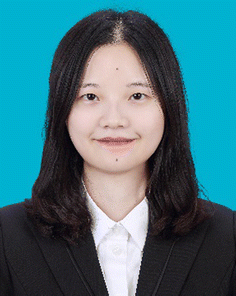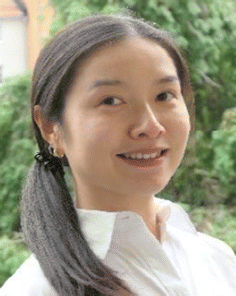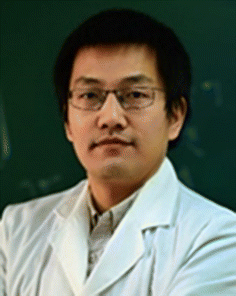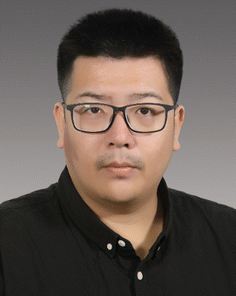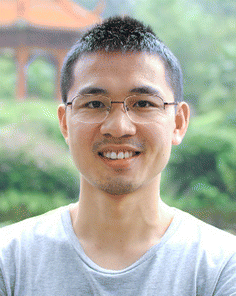DOI:
10.1039/D2TC90175G
(Profile)
J. Mater. Chem. C, 2022,
10, 13290-13302
Contributors to the Emerging Investigators 2022 issue
Abstract
Our 2022 Emerging Investigators themed issues gather some of the best research being conducted by scientists in the early stages of their independent career. Each contributor was recommended as carrying out work with the potential to influence future directions in materials chemistry. Congratulations to all of the researchers featured, we hope you enjoy reading this issue.
Dr John Abendroth obtained his PhD in physical chemistry from the University of California, Los Angeles in 2018 where he studied electron spin-dependent interactions with chiral biomolecules (Prof. Paul Weiss). He then spent two years as a postdoctoral researcher in Materials Science & Engineering at Stanford University (Prof. Jennifer Dionne) investigating chiral light–matter interactions with dielectric metasurfaces. In 2020, he joined ETH Zurich as a postdoctoral researcher with Prof. Christian Degen in the area of nanoscale NMR with nitrogen–vacancy centers. Since 2021 he has been a senior researcher studying molecular systems using diamond-based quantum sensors.
His contribution to the 2022 Journal of Materials Chemistry C Emerging Investigators issue can be read at https://doi.org/10.1039/D2TC01258H.
Professor Zhongfu An graduated from Nanjing University of Posts and Telecommunications and received his PhD degree in 2014. After graduation, he went to the Department of Chemistry, National University of Singapore for his post-doctoral research. He joined the Institute of Advanced Materials, Nanjing Tech University and started his independent research at the end of 2015. Professor Zhongfu An focuses on the research of purely organic phosphorescent materials and applications. He initially proposed and verified the design principle of the stabilization of triplet excitons by H-aggregation for ultralong organic phosphorescence.
His contribution to the 2022 Journal of Materials Chemistry C Emerging Investigators issue can be read at https://doi.org/10.1039/D2TC00836J.
Matteo Atzori is a CNRS researcher at the Laboratoire National des Champs Magnétiques Intenses (LNCMI – CNRS, Grenoble, France). During his PhD (University of Cagliari, Italy and University of Angers, France), he worked on chiral functional molecular materials showing magnetism and electrical conductivity. Then he worked on the quantum coherence properties of vanadium complexes at the University of Florence (Italy). Currently, he is investigating magneto-chiral dichroism in chiral molecules and materials. Matteo has won several awards, including the silver medal of the European Young Chemists’ Award 2018 of EuChemS, and has co-authored more than 40 publications and a book,
Functional Molecular Materials.
His contribution to the 2022 Journal of Materials Chemistry C Emerging Investigators issue can be read at https://doi.org/10.1039/D2TC01777F.
Yang Bai is currently an Associate Professor at Shenzhen Institute of Advanced Technology (SIAT), Chinese Academy of Sciences and also an Honorary Senior Research Fellow at The University of Queensland (UQ), Australia. Yang received his PhD in Chemical Engineering from UQ in 2014, and then he moved to the United States to conduct a two-year postdoc training at the University of Nebraska-Lincoln. Before joining SIAT, he worked at UQ for four years. Bai’s research focuses on the design and synthesis of hybrid semiconductor materials for new-generation thin film photovoltaics and optoelectronics.
His contribution to the 2022 Journal of Materials Chemistry C Emerging Investigators issue can be read at https://doi.org/10.1039/D2TC01869A.
Hanna Boström grew up in Uppsala (Sweden), but received her MChem from the University of St Andrews (UK). She then relocated to Oxford to carry out her DPhil in Inorganic Chemistry under the supervision of Prof. Andrew Goodwin. Following a short postdoctoral stint in Uppsala, she is currently a Humboldt research fellow at the Max Planck Institute for Solid State Research in Stuttgart (Germany), working in the group of Prof. Bettina Lotsch. Hanna’s research interests revolve around the crystallography of metal–cyanide frameworks, often under nonambient conditions, and she has a particular soft spot for complexes containing the beautiful blue Cu
2+ ion.
Her contribution to the 2022 Journal of Materials Chemistry C Emerging Investigators issue can be read at https://doi.org/10.1039/D2TC00848C.
From September 2022, Dr David Canevet has been a Full Professor at the University of Angers, France. In 2010, he obtained his PhD under the supervision of Prof. Marc Sallé, studying redox-responsive molecular architectures and conducting xerogels. He then joined the group of Prof. Nazario Martín in Madrid for a year and a half to develop macrocyclic receptors with strong affinities for fullerenes. Since then, David has enjoyed being both a teacher in the Chemistry Department and a researcher in the MOLTECH-Anjou Laboratory. His research interests currently focus on supramolecular polymers and stimuli-responsive helical foldamers with (chir)optical and redox properties.
His contribution to the 2022 Journal of Materials Chemistry C Emerging Investigators issue can be read at https://doi.org/10.1039/D2TC01799G.
Prof. Jingjing Chang received his PhD degree from the National University of Singapore in 2014. After graduation, he was a Research Fellow in Materials Science & Engineering, National University of Singapore from 2014 to 2015. He then joined Xidian University, where he is currently a Professor. His research interests include perovskite and metal oxide materials, electronic devices (transistors and RRAM devices) and optoelectronic devices (solar cells, photodetectors, and X-ray detectors).
His contribution to the 2022 Journal of Materials Chemistry C Emerging Investigators issue can be read at https://doi.org/10.1039/D2TC01128J.
Dr Menglu Chen finished her BS at the School of the Gifted Young, University of Science and Technology of China in 2015 and her PhD in the Physics Department, University of Chicago in 2020 supervised by Prof. Philippe Guyot-Sionnest. Then she became a professor at the School of Optics and Photonics, Beijing Institute of Technology in 2021. She has won the National Distinguished Young Scholars (Overseas), Young Elite Scientist Sponsorship Program by the China Association for Science and Technology, and Beijing Nova Program awards. She mainly works on the physical properties and optoelectronic application of nanoparticles, especially narrow gap semiconductor colloidal quantum dots.
Her contribution to the 2022 Journal of Materials Chemistry C Emerging Investigators issue can be read at https://doi.org/10.1039/D1TC05202K.
Yu-Cheng Chiu joined the Department of Chemical Engineering at Taiwan Tech. as a tenure-track assistant professor in August 2017. Prior to joining the faculty, Yu-Cheng was a postdoc in the Zhenan Bao research group at Stanford University, where he studied developing intrinsically stretchable/healable semiconductors and high-performance OFETs by solution shearing. Before moving to Stanford, he received his PhD degree under the supervision of Prof. Wen-Chang Chen in December 2012 from the Chem. E. at National Taiwan University and then stayed in the same group for his first post-doctoral research until 2014. Now Yu-Cheng’s research focuses on elastic and self-healing semiconducting polymers, polymer transistors, transistor-based memory, and functional polymer materials.
His contribution to the 2022 Journal of Materials Chemistry C Emerging Investigators issue can be read at https://doi.org/10.1039/D2TC01271E.
Dr Zhiqin Chu received his PhD degree in Physics from The Chinese University of Hong Kong in July 2012. Dr Chu carried out his postdoctoral training (2014/04–2016/09) at The University of Stuttgart (Germany), and then worked as a Research Assistant Professor (2016/10–2018/10) in the Department of Physics at The Chinese University of Hong Kong. Since November 2018, Dr Chu has been an Assistant Professor in the Department of Electrical and Electronic Engineering (Joint Appointment with the School of Biomedical Sciences) at The University of Hong Kong. Dr Chu’s current research interests include quantum sensing/imaging, biophysics, biophotonics and the materials–biology interface.
His contribution to the 2022 Journal of Materials Chemistry C Emerging Investigators issue can be read at https://doi.org/10.1039/D2TC01090A.
Gabriele D’Avino received his PhD in Materials Science at the University of Parma in 2010. After a first postdoc at the University of Bologna and two Marie Curie Fellowships at the University of Liege and at the University of Mons, he joined CNRS with a researcher position at the Institut Neél in Grenoble. His research work focuses on the theoretical modeling of organic functional materials for advanced applications in electronics and energy generation, synergistically combining quantum and classical techniques in a multiscale fashion. The goal of his research is the establishment of the relationships between structure and (electronic, optical, vibrational, dielectric) properties in complex molecular systems with special emphasis on environmental and cooperative phenomena in the solid state.
His contribution to the 2022 Journal of Materials Chemistry C Emerging Investigators issue can be read at https://doi.org/10.1039/D2TC01115H.
Elke Debroye obtained her PhD in 2013, on developing MRI/optical contrast agents in the Laboratory of Bio-inorganic Chemistry, KU Leuven. After postdoctoral stays with Prof. Liz-Marzán in San Sebastian (Spain), Prof. Majima at Osaka University (Japan) and Prof. Bonn at MPI Mainz (Germany), she returned to the Laboratory of Photochemistry and Spectroscopy, KU Leuven. Currently, she is an assistant Professor exploring new perovskite structures with advanced structural and optical characterization techniques, and consequently optimizing their performance toward their application in new generation optoelectronics.
Her contribution to the 2022 Journal of Materials Chemistry C Emerging Investigators issue can be read at https://doi.org/10.1039/D2TC01373H.
Yunfeng Deng received his PhD degree in Polymer Chemistry and Physics from Changchun Institute of Applied Chemistry, Chinese Academy of Sciences in 2015. He then joined University of Waterloo and Technion-Israel Institute of Technology as a postdoctoral research fellow. Currently, he is an associate professor in the School of Materials Science and Engineering, Tianjin University, China. His research mainly focuses on design and synthesis of conjugated materials and related electronic devices.
His contribution to the 2022 Journal of Materials Chemistry C Emerging Investigators issue can be read at https://doi.org/10.1039/D2TC00732K.
Manman Fang, born in 1989, received her PhD degree from Wuhan University in China under the supervision of Prof. Zhen Li in 2018. Then she joined Tianjin University (TJU) in July of 2018 as a lecturer. Her research interests mainly focus on the design and synthesis of new organic optoelectronic materials, including room temperature phosphorescence (RTP), mechanoluminescence (ML) and dye sensitized solar cells (DSSCs). She has more than 10 publications as the first or corresponding author, in journals including
Prog. Mater. Sci.,
Angew. Chem., Int. Ed.,
Adv. Mater.,
J. Mater. Chem. C and so on.
Her contribution to the 2022 Journal of Materials Chemistry C Emerging Investigators issue can be read at https://doi.org/10.1039/D2TC01537D.
Dechao Geng has been a full Professor at Tianjin Key Laboratory of Molecular Optoelectronic Sciences, Department of Chemistry, School of Science, Tianjin University since September 2019. Before that, he carried out research as a research fellow at the National University of Singapore and Singapore University of Technology and Design. He received his PhD from the Institute of Chemistry, Chinese Academy of Sciences in 2015. His current research interests mainly focus on the controlled chemical vapor deposition synthesis of 2D materials and their further properties and applications. He has published over 60 peer-reviewed articles, and has served as an academic editor for
SmartMat.
His contribution to the 2022 Journal of Materials Chemistry C Emerging Investigators issue can be read at https://doi.org/10.1039/D2TC01095J.
Xiaodan Gu received his PhD from the Department of Polymer Science and Engineering at the University of Massachusetts Amherst in 2014. Subsequently, he did post-doctoral study at Stanford University and the SLAC National Accelerator Laboratory. He has been a Nina Bell Suggs endowed assistant professor in the School of Polymer Science and Engineering at the University of Southern Mississippi since 2017. His current research interest revolves around various fundamental polymer physics phenomena related to conjugated polymers and their derivative devices. His group studies the structure, dynamics, and morphology of conjugated polymers and aims to link their molecular structures to their macroscopic properties through advanced metrology with an emphasis on scattering techniques.
His contribution to the 2022 Journal of Materials Chemistry C Emerging Investigators issue can be read at https://doi.org/10.1039/D2TC00761D.
Dr Zachary M. Hudson is an Associate Professor and Canada Research Chair in Sustainable Chemistry at the University of British Columbia. Zac completed his BSc and PhD in chemistry at Queen’s University, developing luminescent materials for organic electronics. During his PhD he also held graduate fellowships at Jilin University (China) as well as Nagoya University (Japan). He then completed postdoctoral fellowships in polymer science at the University of Bristol (UK) and the University of California, Santa Barbara (USA). He currently leads a research program at UBC developing luminescent materials for optoelectronics, bioimaging, and photocatalysis.
His contribution to the 2022 Journal of Materials Chemistry C Emerging Investigators issue can be read at https://doi.org/10.1039/D2TC01153K.
Deyang Ji is a professor at the Institute of Molecular Aggregation Sciences, Tianjin University. He received his BS from Ocean University of China in 2009. He received his PhD from the Institute of Chemistry, Chinese Academy of Sciences in 2014 under the supervision of Prof. Wenping Hu. And then he did research as a postdoc fellow in the group of Prof. Harald Fuchs at University of Münster, Germany. In 2019, he joined Tianjin University as a Professor. His research interest focuses on organic optoelectronics.
His contribution to the 2022 Journal of Materials Chemistry C Emerging Investigators issue can be read at https://doi.org/10.1039/D2TC00646D.
Shan Jiang completed her PhD at University of Liverpool, UK in 2013 and she worked with Prof. Andy Cooper (FRS) on rational design of porous organic cages. After that, she worked at University of Liverpool and Durham University for her postdoctoral studies. In 2019, she joined ShanghaiTech University as a PI, and her research interests include combining high-throughput computational and synthetic approaches to expedite new materials discovery, and designing new porous molecular materials with new functions, such as organic ferroelectrics.
Her contribution to the 2022 Journal of Materials Chemistry C Emerging Investigators issue can be read at https://doi.org/10.1039/D2TC01330D.
Prof. Young-Kwan Kim received his PhD in chemistry at Korea Advanced Institute of Science and Technology in 2012 and worked as a postdoctoral fellow at Seoul National University and the University of Massachusetts, Amherst. In 2015, he joined the Carbon Composites Research Center at Korea Institute of Science and Technology as a Senior Researcher. Since 2019, he has been an assistant professor in the Department of Chemistry at Dongguk University. His research interests include the synthesis, surface functionalization, nanohybridization and macroscopic assembly of carbon-based nanomaterials for development of bioanalytical platforms and high-performance nanocomposites.
His contribution to the 2022 Journal of Materials Chemistry C Emerging Investigators issue can be read at https://doi.org/10.1039/D2TC01139E.
Jatish Kumar obtained his PhD in Chemistry from the CSIR-National Institute for Interdisciplinary Science and Technology (NIIST), Trivandrum, India. After completion of his PhD, he worked initially as a JSPS postdoctoral fellow and later as an assistant professor at the Nara Institute of Science and Technology (NAIST), Nara, Japan. Later he moved as a Marie Curie postdoctoral fellow to CIC biomaGUNE in San Sebastian, Spain. He joined the Indian Institute of Science Education and Research (IISER) Tirupati, India as an Assistant Professor in December 2018. His research interests are in the field of nanoscale chirality, photochemistry and assembly of nanomaterials.
His contribution to the 2022 Journal of Materials Chemistry C Emerging Investigators issue can be read at https://doi.org/10.1039/D2TC02193E.
Geneva Laurita completed her BS in Chemistry at the University of Northern Colorado in 2010, her PhD in Chemistry at Oregon State University in 2014, and postdoctoral research at the University of California, Santa Barbara in 2017. She is currently an Assistant Professor of Chemistry and Biochemistry at Bates College, where her research focuses on understanding the structure–property relationships of solid state oxides with an emphasis on neutron and synchrotron X-ray total scattering techniques. A major component of her work is undergraduate exposure to National Laboratory User Facilities.
Her contribution to the 2022 Journal of Materials Chemistry C Emerging Investigators issue can be read at https://doi.org/10.1039/D2TC01328B.
Dr Haixing Li is an Assistant Professor in the Department of Physics at City University of Hong Kong. She obtained her BS in Physics from the University of Science and Technology of China in 2012 where she did her undergraduate thesis with Prof. Xianhui Chen growing oxides in search of superconductors. During her undergraduate studies, she also spent a summer at the University of Oxford learning quantum optics. She then moved to Columbia University and earned her PhD in Applied Physics in 2017 under the guidance of Prof. Latha Venkataraman uncovering the electronic properties of molecular silicon. She worked as a postdoctoral fellow and later a Charles H. Revson Senior Fellow in the laboratory of Prof. Ruben Gonzalez at Columbia University studying mechanisms of ribosomal frameshifting from 2017 to 2021. Her research group examine molecules and bio-inspired architectures at the single molecule level to spark advances in electronics, health, and sustainability.
Her contribution to the 2022 Journal of Materials Chemistry C Emerging Investigators issue can be read at https://doi.org/10.1039/D2TC01140A.
Dr Haoyuan Li is currently a Professor in the School of Microelectronics at Shanghai University in China. He obtained his PhD degree from Tsinghua University in 2015, under the supervision of Prof. Yong Qiu. He then joined the group of Prof. Jean-Luc Brédas as a Postdoctoral Fellow and became a Research Scientist later on. He worked at King Abdullah University of Science and Technology, Georgia Institute of Technology and the University of Arizona from 2015 to 2020. His research interests include two-dimensional covalent organic frameworks, organic electronic devices and energy storage systems studied by multi-scale simulations and machine learning modelling.
His contribution to the 2022 Journal of Materials Chemistry C Emerging Investigators issue can be read at https://doi.org/10.1039/D2TC01076C.
Xiao Li is an assistant professor in the Department of Materials Science and Engineering, University of North Texas. She received her PhD in Polymer Chemistry and Physics from Changchun Institute of Applied Chemistry, Chinese Academy of Sciences. She did postdoctoral research in Chemical & Biological Engineering at University of Wisconsin-Madison (2012–2013), and Pritzker School of Molecular Engineering at University of Chicago (2013–2015). She was also a research scientist at University of Chicago (2015–2019), and a visiting resident associate at Argonne National Laboratory (2015–2019). Her current research interests focus on the self-assembly of block copolymers, liquid crystals, colloidal particles and liquid crystal elastomers for optoelectronic, biomedical and microactuator applications.
Her contribution to the 2022 Journal of Materials Chemistry C Emerging Investigators issue can be read at https://doi.org/10.1039/D2TC01333A.
Dr Fucai Liu is a full professor at University of Electronic Science and Technology, China. He received his PhD degree and BSc degree from Nankai University, China. After graduation, he worked as a postdoc at Tohoku University, Japan and Nanyang Technological University, Singapore. His research interests focus on the study of electronic and optoelectronic properties of novel low-dimensional systems, and their application for high performance information functional devices.
His contribution to the 2022 Journal of Materials Chemistry C Emerging Investigators issue can be read at https://doi.org/10.1039/D2TC01340A.
Riccardo Marin obtained his PhD in Chemistry jointly from the University Ca’ Foscari (Venice, Italy) and the Institut National de la Recherche Scientifique (INRS; Varénnes, Canada) under the supervision of Prof. Patrizia Canton and Prof. Fiorenzo Vetrone. He then undertook a postdoctoral fellowship at the University of Ottawa from 2017 to 2019 with Prof. Eva Hemmer and Prof. Muralee Murugesu. In 2019, he moved with a Marie Skłodowska-Curie individual fellowship to the Universidad Autónoma de Madrid in the group of Prof. Daniel Jaque (nanoBIG), where he is currently a postdoctoral researcher. His research interests span from (nano)materials based on lanthanide ions and semiconductors for biomedical applications to coordination compounds with optomagnetic properties. He is an enthusiast of design and its use to convey scientific results clearly and accessibly to different audiences.
His contribution to the 2022 Journal of Materials Chemistry C Emerging Investigators issue can be read at https://doi.org/10.1039/D2TC01661C.
Dr Cassandre Quinton is a CNRS researcher working in the field of π-conjugated materials (nanohoops, bridged oligophenylenes,
etc.). She received her PhD in Chemistry from the Ecole Normale Supérieure de Cachan. After that, she obtained a postdoctoral fellowship from the Japan Society for the Promotion of Science to conduct her research at the Nara Institute of Science and Technology. In 2016, she was awarded a Marie Skłodowska-Curie Individual Fellowship to start her research on nanohoops at the University of Rennes 1. In 2018, she joined the CNRS. Her current molecules of interest are cyclic bridged oligophenylenes.
Leonardo Scarabelli earned his BSc and MSc in chemistry from the University of Pavia, and received his PhD from the University of Vigo in 2016, under the direction of Prof. L. M. Liz-Marzán. After training as a postdoc at the University of California, Los Angeles, in the laboratory of Prof. P. S. Weiss, he began his independent academic career at the Institute of Materials Science of Barcelona (ICMAB) as a “La Caixa” Junior Leader. His current interests include the development of unconventional strategies for the direct surface synthesis of plasmonic arrays, and their implementation into strong-coupled hybrid plasmonic materials.
His contribution to the 2022 Journal of Materials Chemistry C Emerging Investigators issue can be read at https://doi.org/10.1039/D2TC01148D.
Dr Chien-Chung Shih is an Assistant Professor of Chemical and Materials Engineering at National Yunlin University of Science and Technology (NYUST). He received his PhD degree in Chemical Engineering from National Taiwan University in 2016 and joined Prof. Wen-Chang Chen’s group as a postdoc researcher from 2016–2019. Prior to joining the faculty, he conducted his postdoc research and worked with Prof. Zhenan Bao at Stanford University from 2019 to 2021. His research focuses on conjugated polymers and their applications in field-effect transistors, transistor-structured memory, phototransistors and sorting of single-walled carbon nanotubes.
His contribution to the 2022 Journal of Materials Chemistry C Emerging Investigators issue can be read at https://doi.org/10.1039/D2TC01132H.
Kenan Song is currently an assistant professor at Arizona State University (ASU). He obtained his PhD in Mechanical Engineering from Northeastern University (2015) and trained as a Postdoc in the Chemical Engineering and Materials Science and Engineering departments at MIT (2015–2017) before joining ASU. Dr Song’s current research includes textile engineering, coating technology, and 3D printing, especially the innovative use of manufacturing tools in tuning material dimensions (
e.g., 1D fibers, 2D coatings, and 3D layers), types (
e.g., polymers, nanoparticles), mesoscale structures (
e.g., polymer chemistry, nanoparticle morphologies, composite interfaces), and properties (
e.g., mechanical, thermal, electrical, optical, and stimuli-responsive behaviors).
His contribution to the 2022 Journal of Materials Chemistry C Emerging Investigators issue can be read at https://doi.org/10.1039/D2TC01109C.
Lydia Sosa Vargas has been a CNRS researcher at the Paris Institute of Molecular Chemistry since 2017. Originally from Mexico, she obtained her PhD at the University of East Anglia in the UK under the supervision of Professors Andrew N. Cammidge and Michael J. Cook. She carried out her first postdoctoral position in Japan, at the National Institute of Advanced Industrial Science and Technology (AIST) with Dr Yo Shimizu. In 2015, she joined the polymer chemistry team at Sorbonne University before being recruited by the French National Centre of Scientific Research (CNRS). She is a member of the Royal Society of Chemistry, the French Chemical Society and the Mexican System of Researchers (SNI-1). Since 2020 she has been a member of the IUPAC Subcommittee of Polymer Terminology and Polymer Education. In 2019, she was an awardee of the IUPAC Periodic Table of Young Researchers. Her research focuses on the synthesis of pi-conjugated materials for applications in organic electronics and supramolecular self-assembly.
Her contribution to the 2022 Journal of Materials Chemistry C Emerging Investigators issue can be read at https://doi.org/10.1039/D2TC01331B.
Markus Suta (32) obtained his PhD degree in Chemistry in the group of Prof. Claudia Wickleder in 2017 and continued with a second degree in Physics (MSc) in the group of Prof. Thomas Mannel at the University of Siegen, Germany. He followed up with a postdoctoral stay in the group of Prof. Andries Meijerink at Utrecht University, The Netherlands. In May 2021, he started his own research group as a tenure track assistant professor for Inorganic Photoactive Materials at the Heinrich-Heine University Düsseldorf, Germany. His group works on the development of inorganic phosphors for
e.g., thermometry, LEDs, or upconversion.
His contribution to the 2022 Journal of Materials Chemistry C Emerging Investigators issue can be read at https://doi.org/10.1039/D2TC01152B.
Claire Tonnelé received her PhD from the University of Mons in 2013 under the stimulating guidance of Prof. Roberto Lazzaroni and Dr David Beljonne. She then started her postdoc journey under warmer and sunnier climes at the University of Queensland (Australia) before returning to her homeland at the University of Bordeaux (France). She is now happily solving the riddles of molecular materials at the Donostia International Physics Centre (DIPC), supported by the DIPC and Gipuzkoa’s council joint program “Women and Science” and the Basque Country’s scenery and gastronomy. Her research activity lies in the study of organic (functional) systems for application in organic electronics from a computational perspective, with the main objectives of establishing structure–property relationships in (macro)molecular organic materials and obtaining a comprehensive picture of the underlying photophysical processes.
Her contribution to the 2022 Journal of Materials Chemistry C Emerging Investigators issue can be read at https://doi.org/10.1039/D2TC01632J.
Daniel Tordera is an Assistant Professor in the Physical Chemistry Department and the Molecular Science Institute of the University of Valencia, where his research focuses on the topic of perovskite optoelectronic devices. He received his PhD in Nanotechnology at the University of Valencia in 2014. After that he followed a rather unorthodox path, starting his own spin-off (Lec-Val Lighting, 2014), going back to academia as a postdoc (Linköping University, 2015), and being a researcher of industrial projects for high-tech companies (Holst Centre at TNO, 2017). When he is not in the lab he enjoys writing thrillers. His first novel “
El arte de la fuga” was one of the ten finalists of the biggest award in the Spanish language (Premio Planeta) and will be published this year.
His contribution to the 2022 Journal of Materials Chemistry C Emerging Investigators issue can be read at https://doi.org/10.1039/D2TC01052F.
Dongsheng Wang has been an Associate Professor at University of Electronic Science and Technology of China (UESTC) since 2017. He received his PhD degree from the Max-Planck-Institute for Polymer Research (MPIP) in 2017. He is working as the head of the MPIP-UESTC partner group. His main research interests are focused on photoresponsive molecules and materials.
His contribution to the 2022 Journal of Materials Chemistry C Emerging Investigators issue can be read at https://doi.org/10.1039/D2TC01345B.
Gang Wang has been a full professor at the State Key Lab for Modification of Chemical Fibers and Polymer Materials (SKLFPM), Donghua University since November 2019. Before that, he carried out research at Georgia Institute of Technology and Northwestern University from 2013 to 2019. He obtained his PhD degree in Materials Science and Engineering from Donghua University, China. His current research interests include electronic (especially semiconducting) fibers and smart clothing for human–machine interfaces. He has published over 60 peer-reviewed articles, in journals including
Nature Materials,
PNAS,
JACS,
etc. Currently, he is serving as an academic editor for
Advanced Fiber Materials.
His contribution to the 2022 Journal of Materials Chemistry C Emerging Investigators issue can be read at https://doi.org/10.1039/D2TC01618D.
Prof. Jianguo Wang was born in Inner Mongolia (China). He received his PhD in 2014 from the Institute of Chemistry, Chinese Academy of Sciences (ICCAS) under the supervision of Prof. Deqing Zhang. He spent two years as a postdoctoral fellow in Prof. Ben Zhong Tang’s group at Hong Kong University of Science and Technology (HKUST). In 2019, he started his research group as a Professor at Inner Mongolia University. His research interests focus on organic optoelectronic materials with aggregation-induced emission (AIE) properties for disease diagnosis and treatment.
His contribution to the 2022 Journal of Materials Chemistry C Emerging Investigators issue can be read at https://doi.org/10.1039/D2TC01093C.
Dr Kun Wang is currently an Assistant Professor in Physics and Chemistry at Mississippi State University, Mississippi, United States. He received his BS in Physics from Shandong University, China (2011) and PhD in Physics from the University of Georgia under the supervision of Prof. Bingqian Xu (2016). Prior to joining MSU in 2020, he worked as a Research Fellow with Prof. Pramod Reddy at the University of Michigan, Ann Arbor. His research group at MSU focuses on developing advanced experimental tools to explore optoelectronics, quantum transport, and energy conversion at the atomic and molecular scale.
His contribution to the 2022 Journal of Materials Chemistry C Emerging Investigators issue can be read at https://doi.org/10.1039/D2TC01155G.
Songcan Wang is currently a professor at the Institute of Flexible Electronics (IFE), Northwestern Polytechnical University (NPU), China. He received his BEng (2011) and MEng (2014) from Central South University (CSU), China, and PhD degree from the University of Queensland (UQ), Australia in 2018. Before joining NPU, he worked as a postdoctoral research fellow in Professor Lianzhou Wang’s group at UQ for about 1.5 years. His research interests focus on the synthesis of semiconductor nanomaterials for solar energy conversion and storage, including photoelectrochemical cells, photocatalysis, solar cells, and rechargeable batteries.
His contribution to the 2022 Journal of Materials Chemistry C Emerging Investigators issue can be read at https://doi.org/10.1039/D2TC01692C.
Pengyao Xing is currently a full professor in the School of Chemistry and Chemical Engineering, Shandong University. He received his BSc and PhD degrees from Shandong University under the supervision of Prof. Aiyou Hao. He was a postdoctoral scholar with Prof. Yanli Zhao at Nanyang Technological University. Since December 2018, he has been a full professor in the School of Chemistry and Chemical Engineering, Shandong University. His research interests mainly focus on the emergence and control of chirality at hierarchical levels. Prof. Xing has published more than 40 scientific papers as corresponding author and was awarded the High-Level Young Talents of China in 2021.
His contribution to the 2022 Journal of Materials Chemistry C Emerging Investigators issue can be read at https://doi.org/10.1039/D2TC00032F.
Soniya Yambem is a Senior Lecturer in Physics at the School of Chemistry and Physics, Queensland University of Technology (QUT). Soniya’s research focusses on organic electronic devices, including organic photovoltaics, organic light emitting diodes and organic thin film transistors. She is interested in developing organic electronic devices for sensing, biosensing and bioelectronics. Soniya received her PhD from the University of Houston and then held a postdoctoral research fellowship at the University of Queensland. She then joined QUT as a Vice-Chancellor’s Research Fellow, after which she transitioned to a Lecturer position and was promoted to a Senior Lecturer.
Her contribution to the 2022 Journal of Materials Chemistry C Emerging Investigators issue can be read at https://doi.org/10.1039/D2TC01096H.
Dengtao Yang has been a professor in the School of Chemistry and Chemical Engineering at Northwestern Polytechnical University since September 2020. He received his BS in Chemistry and BEng in Computer Science from Lanzhou University in 2010. After he obtained his MS in Organic Chemistry from the same university in 2013, he moved to Canada and joined Prof. Suning Wang’s group at Queen’s University to pursue his PhD degree (2013–2017). He continued his academic career at MIT as a postdoc associate (advisor: Karthish Manthiram) from 2018–2020. His current research interests focus on boron-based organic functional materials.
His contribution to the 2022 Journal of Materials Chemistry C Emerging Investigators issue can be read at https://doi.org/10.1039/D2TC01106A.
Chang-Jiang Yao obtained his PhD from the Institute of Chemistry, Chinese Academy of Sciences (ICCAS), in 2013. Then he worked as an assistant professor in the same institute for two years. After research experience at Regensburg University (Germany), Wuerzburg University (Germany) and Nanyang Technological University (Singapore), he joined Beijing Institute of Technology as a professor in 2019. His current research interest is focused on organic/polymer functional materials for energy and photo/electronic application.
His contribution to the 2022 Journal of Materials Chemistry C Emerging Investigators issue can be read at https://doi.org/10.1039/D2TC01150F.
Hulin Zhang is a professor at Taiyuan University of Technology, China. He received his PhD in Condensed Matter Physics from Chongqing University in 2014. During the period of 2012 to 2014, he studied as a joint-training doctoral candidate in Zhong Lin Wang’s group at Georgia Institute of Technology, USA. Before joining Taiyuan University of Technology, he served University of Electronic Science and Technology of China (UESTC) as an associate professor from 2014 to 2017 and Hong Kong Polytechnic University (PolyU) as a research fellow in 2017. His research interests include thermogalvanic devices and self-powered sensors based on diverse hydrogels.
His contribution to the 2022 Journal of Materials Chemistry C Emerging Investigators issue can be read at https://doi.org/10.1039/D2TC00889K.
Dr Shiming Zhang is currently an Assistant Professor at the University of Hong Kong (HKU). He is the PI of the wearable, intelligent, and soft electronics (WISE) research group. Before joining HKU, he spent three years at The University of California, Los Angeles (UCLA) as a postdoctoral scholar. He was promoted to group leader on medical wearables in the Center of Minimally Invasive Therapeutics at UCLA. Dr Zhang obtained his PhD (Best Thesis Awardee) from Ecole Polytechnique, University of Montreal, Canada, and BS and MS (University Honor) from Jilin University, China. He is known for his pioneering contributions in designing tissue-like organic bioelectronics, focusing on soft and healable organic electrochemical transistors (OECTs). He conceptualized the world’s first stretchable OECTs and first self-healable OECTs. His lab developed and commercialized the “PERfECT” readout system, which is the world’s smallest (coin-sized) and lightest (0.4 g) analytical control unit for wireless and wearable OECT characterization.
His contribution to the 2022 Journal of Materials Chemistry C Emerging Investigators issue can be read at https://doi.org/10.1039/D2TC01530G.
Dr Xiao Zhang is a postdoctoral research fellow at Beihang University, China. She received her Bachelor of Engineering Degree from the University of Science and Technology Beijing in 2013, and received her PhD Degree in Materials Science and Engineering from Beihang University in 2018. She worked at Chongqing University as faculty staff from 2018 to 2020. And then she joined Beihang University and began her postdoctoral research in 2020. Her main research interests focus on thermoelectric materials and devices, and thermal barrier coatings.
Her contribution to the 2022 Journal of Materials Chemistry C Emerging Investigators issue can be read at https://doi.org/10.1039/D2TC00719C.
Dan Zhao is an Associate Professor in the Laboratory of Organic Electronics (LOE) at Linköping University. She received her BS from the Chemistry Department at Nankai University in 2008. After finishing her PhD at Renmin University in China, she joined the LOE as a post-doctoral researcher in 2013. Her research interests include ionic thermoelectrics, and electrolyte based and dielectric materials.
Her contribution to the 2022 Journal of Materials Chemistry C Emerging Investigators issue can be read at https://doi.org/10.1039/D2TC01130A.
Yufei Zhong received his PhD from the Department of Applied Chemistry at University of Tokyo under the supervision of Prof. Hashimoto Kazuhito. He carried out his postdoc studies with Dr Tajima Keisuke at Riken, Prof. Aram Amassian at KAUST and Prof. Natalie Banerji at University of Bern. He now serves as a full professor at NingboTech University in China. His research focuses on molecular self-assembly in solution-processed organic semiconductors and interfacial photophysics in optoelectronics. He aims to understand the fundamental aspects, especially in next generation photovoltaics, and transfer the know-how to realize their future practical applications.
His contribution to the 2022 Journal of Materials Chemistry C Emerging Investigators issue can be read at https://doi.org/10.1039/D2TC02185D.
Yang Zhou is now an Assistant Professor in the College of New Energy and Materials Science, China University of Petroleum, Beijing (CUPB), China. He obtained his PhD, Master’s and Bachelor’s degrees from Nanyang Technological University, Singapore. His research interests include hydrogel based functional materials and stimuli-responsive materials, and their application in energy saving engineering and petroleum engineering fields.
His contribution to the 2022 Journal of Materials Chemistry C Emerging Investigators issue can be read at https://doi.org/10.1039/D2TC01104B.
Professor Guohong Zou earned his BS degree from Central South University in 2008, and obtained his PhD degree in 2013 from Fujian Institute of Research on the Structure of Matter, Chinese Academy of Sciences, China, under the direction of Professor Ning Ye on discovering new nonlinear optical materials. He performed postdoctoral research in the group of Prof. Kang Min Ok at Chung-Ang University, Korea, on UV nonlinear optical crystals. Currently, he is a Professor at Sichuan University. His research includes discovering novel inorganic optical materials.
His contribution to the 2022 Journal of Materials Chemistry C Emerging Investigators issue can be read at https://doi.org/10.1039/D1TC06086D.
|
| This journal is © The Royal Society of Chemistry 2022 |
Click here to see how this site uses Cookies. View our privacy policy here. 
